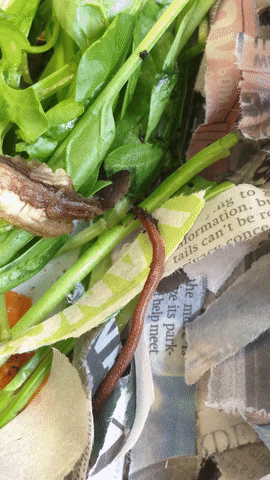Strangely enough, the end of my degree here at UBC reminded me of summers as a grubby 5-year-old, digging around for earthworms in my poor mother’s carefully cultivated garden. While I didn’t have to dig for them myself, for my independent project, I chose to work on red wiggler worms, which are commonly used for vermicomposting—composting with worms. These little decomposers speed up the breakdown of common compost items like food scraps and newspaper. By consuming these materials, they produce a nutrient-rich compost, which provides nutrients back to plants, making them an important part of the circle of life!
Like most earthworms, red wigglers are light sensitive—they get stressed and can eventually die after long exposures. This was interesting to me, because of the global increase in light pollution. Not only is artificial light preventing optimal stargazing in cities, it can affect animal behaviour—changing daily and seasonal rhythms. Working within the context of light pollution, I was wondering how exposing my red wigglers to light would affect their habitat preference. Since earthworms essentially eat their habitat, I thought this could give some insight into what material, and what temperature conditions would be best for the worms if they were stressed by light.
Unfortunately, my results weren’t very conclusive. The data shows that the worms were equally likely to choose food scraps or newspaper in the light or the dark. Same

A red wiggler crawling away from food scraps, into the damp newspaper.
goes for their temperature preference, but there was a slight trend suggesting that the worms may prefer cold temperatures when exposed to light. This is what I predicted, because worms don’t regulate their body temperature, so at colder temperatures they can slow down their metabolism. By slowing down their metabolisms, they don’t require as much food or oxygen to stay alive, which can increase its chances of survival in stressful situations. However, slower metabolism means they aren’t reproducing or eating as much, and if you are trying to get the most compost out of your worms, they need to be eating a lot, and making lots of baby worms! However, when running an experiment, statistical analysis is important, and my stats show that this trend could be the worms actively choosing cooler temperature, or it could just be a product of random chance. When we get a “non-significant trend” it means that maybe we need to repeat and improve the experiment to see whether our results will be significant the second time around.
For now, with my potential trend, and the past research on earthworms, I think it’s safe to say: if you want a lot of compost for your summer garden, it’s best to keep your worms nice and happy in a dark place!